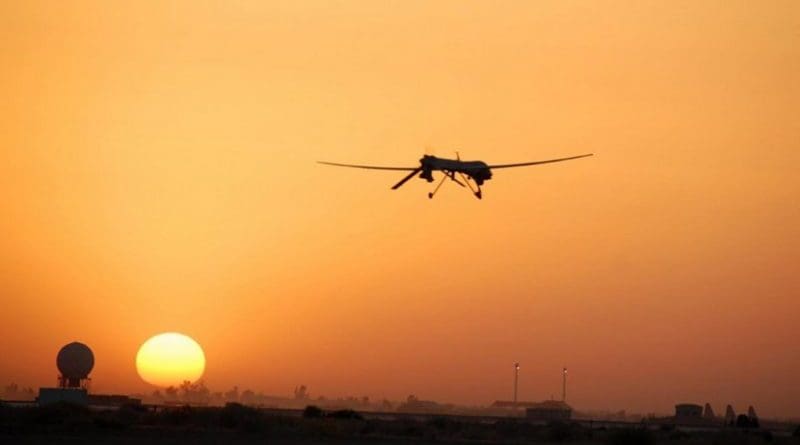The United States And The Modernization Of India’s Defence Industrial Base – Analysis
By Institute of South Asian Studies
By C Raja Mohan
For nearly two decades, India and the United States (US) steadily expanded their defence cooperation. Yet, the engagement was marked by considerable caution. Every step forward was matched by two steps back. If notions of ‘strategic autonomy’ from the US seemed to hold back India, Washington appeared unwilling to go the full distance in beefing up Delhi’s defence capabilities by loosening its export controls on sensitive technologies.
That is now set to change. On the eve of Indian Prime Minister Narendra Modi’s visit to Washington, the US firm, General Electric (GE), has agreed to transfer 80 per cent of the technologies involved in the licenced production of its GE414 engine in India. This high-thrust engine will power India’s fighter aircraft under development at home.
The agreement between GE and Hindustan Aeronautics Limited (HAL), India’s public sector aerospace company, is expected to be unveiled during Modi’s visit to Washington from 21 to 23 June 2023. Within India, HAL and GE are expected to set up partnerships with a large number of domestic companies, including Tata Advanced Systems Limited, to develop a robust aerospace ecosystem in the coming years.
India did not have access to American defence products during much of the Cold War and Delhi’s prickly relationship with Washington meant there was no real room for defence cooperation. It was only in the early 2000s, when the relations between the two sides began to warm up, that India began to import US weapon systems.
Since then, Washington has supplied more than US$20 billion (S$26.8 billion) worth of arms to Delhi. India’s security forces now operate a number of US aircraft, including the P-8, C-130, and C-17; they also operate two kinds of helicopters – the Chinook and Apache. The GE-HAL agreement on producing the 414 jet engines in India, however, marks a significant elevation of the character of bilateral defence cooperation.
It is now moving from a buyer-seller relationship to joint research, co-development and co-production of weapons. This reorientation was attempted under the 2012 Defence Technology and Trade Initiative (DTTI). However, the DTTI did not go far amidst the difficulty of aligning the rigid US export control policies in the US and the nature of India’s defence acquisition and production systems.
Over the last two years, there has been a systematic effort to overcome the difficulties in restructuring the defence relationship. Within India, Modi made a key decision to reduce defence imports and focus on domestic production as part of the new call for ‘Atmanirbhar Bharat’ (Self-Reliant India).
Modi also opened up the defence sector for participation by the Indian private capital as well as foreign capital, thereby ending the monopoly of the defence public sector undertakings. As a first, the Modi government facilitated the production of the European C-295 military transport aircraft by a joint venture of the Tatas and Airbus.
Within the US, the Joe Biden administration responded to the long-standing demand from the Indian government for a liberalisation of the technology export controls to facilitate deeper strategic cooperation between the two sides. With the Biden administration focused on the China challenge, it was ready to take a fresh look at high technology cooperation between the two countries, including in defence technologies.
Out of this effort came the Initiative on Critical and Emerging Technologies that was first articulated at the Modi-Biden meeting in Tokyo on the margins of the Quadrilateral Security Dialogue summit in Tokyo in May 2022. The initiative was fleshed out at the meeting between India’s National Security, Adviser Ajit Doval, and his US counterpart, Jake Sullivan at the end of January 2023. The idea of a solid defence partnership, including the transfer of GE 414 engine technology, was mentioned in the document.
The visit of US Defence Secretary Lloyd Austin to India in early June 2023 saw the reported agreement on a road map for defence industrial collaboration that promises a ‘paradigm shift’ in the engagement between the two security establishments.
Clearly, the shared interest in building a stable balance of power system in Asia and the Indo-Pacific provided the prime impetus for the new framework of defence and high technology cooperation between Delhi and Washington.
One entirely unanticipated push for deeper defence industrial collaboration came from the Russian war in Ukraine. Although miffed by the Indian reluctance to criticise Moscow, Washington saw an opportunity to accelerate India’s defence diversification away from Russia. The new defence industrial collaboration between India and the US is a definitive step in reducing Delhi’s strategic reliance on Moscow.
Modi’s visit to Washington makes it quite explicit that the US is going a considerable distance to address India’s interests and concerns on the defence front. Less clear in the public domain is Delhi’s offer in return.
On its part, the US has been looking for greater ‘operational cooperation’ with the Indian armed forces to develop what the Pentagon calls ‘integrated deterrence’ in the Indo-Pacific. This involves greater collaboration across multiple domains between the US and its partners to restrain adversaries from embarking on aggression.
Analyst Ashley Tellis, however, has argued that India is unlikely to offer such operational collaboration in various military contingencies in Asia, such as a US-China conflict over Taiwan. However, US officials appear confident that the Biden administration’s effort to support the emergence of a strong India that can defend itself will also become a valuable net security provider in the Indo-Pacific.
About the author: Professor C Raja Mohan is a Visiting Research Professor at the Institute of South Asian Studies (ISAS), an autonomous research institute in the National University of Singapore (NUS). He can be contacted at [email protected]. The author bears full responsibility for the facts cited and opinions expressed in this paper.
Source: This article was published by Institute of South Asian Studies (ISAS)

